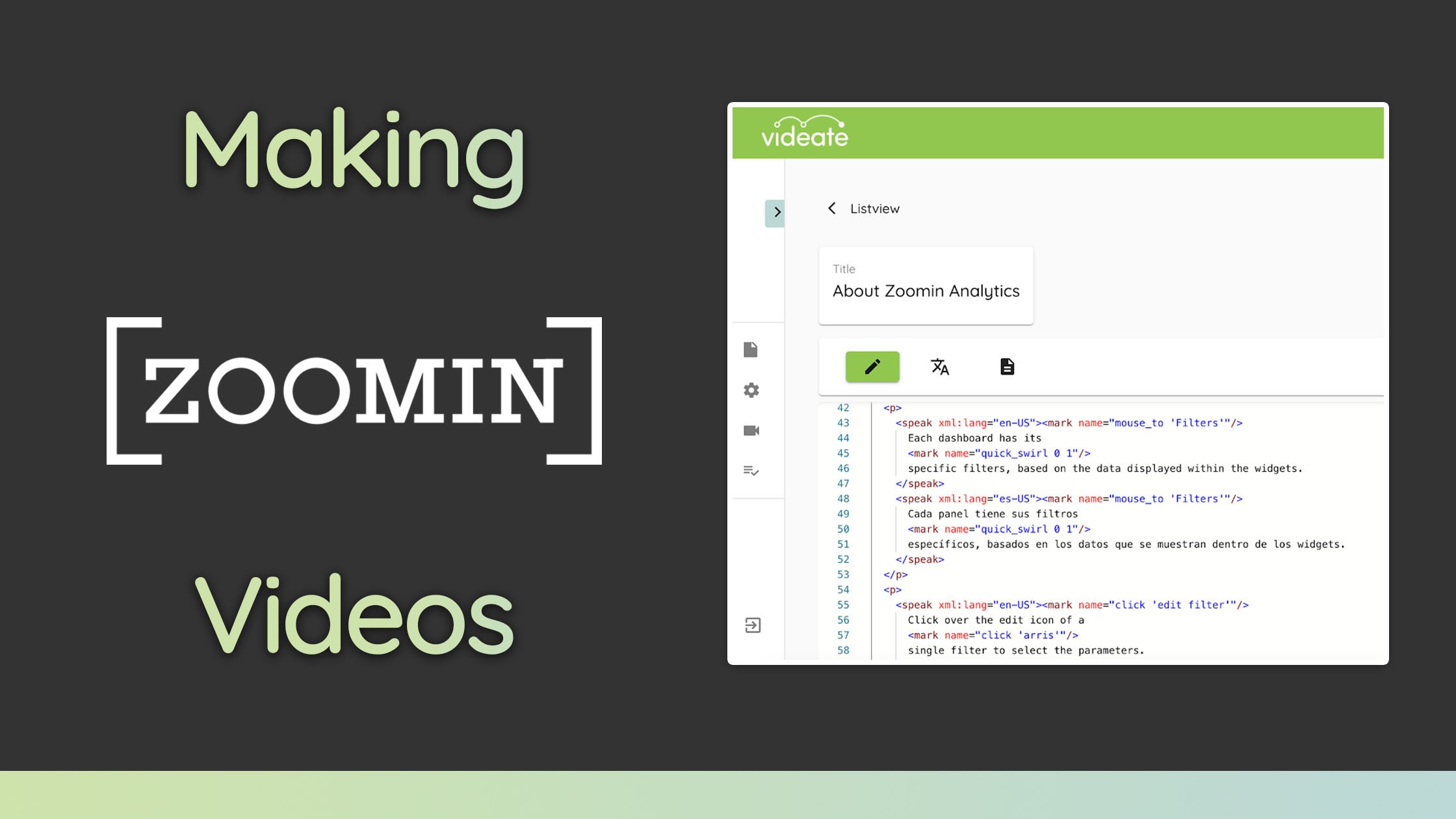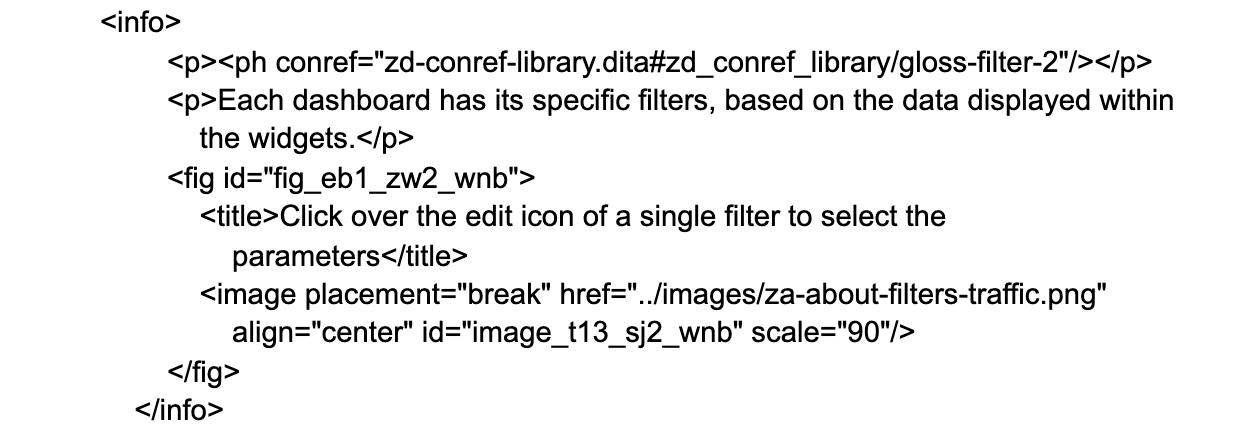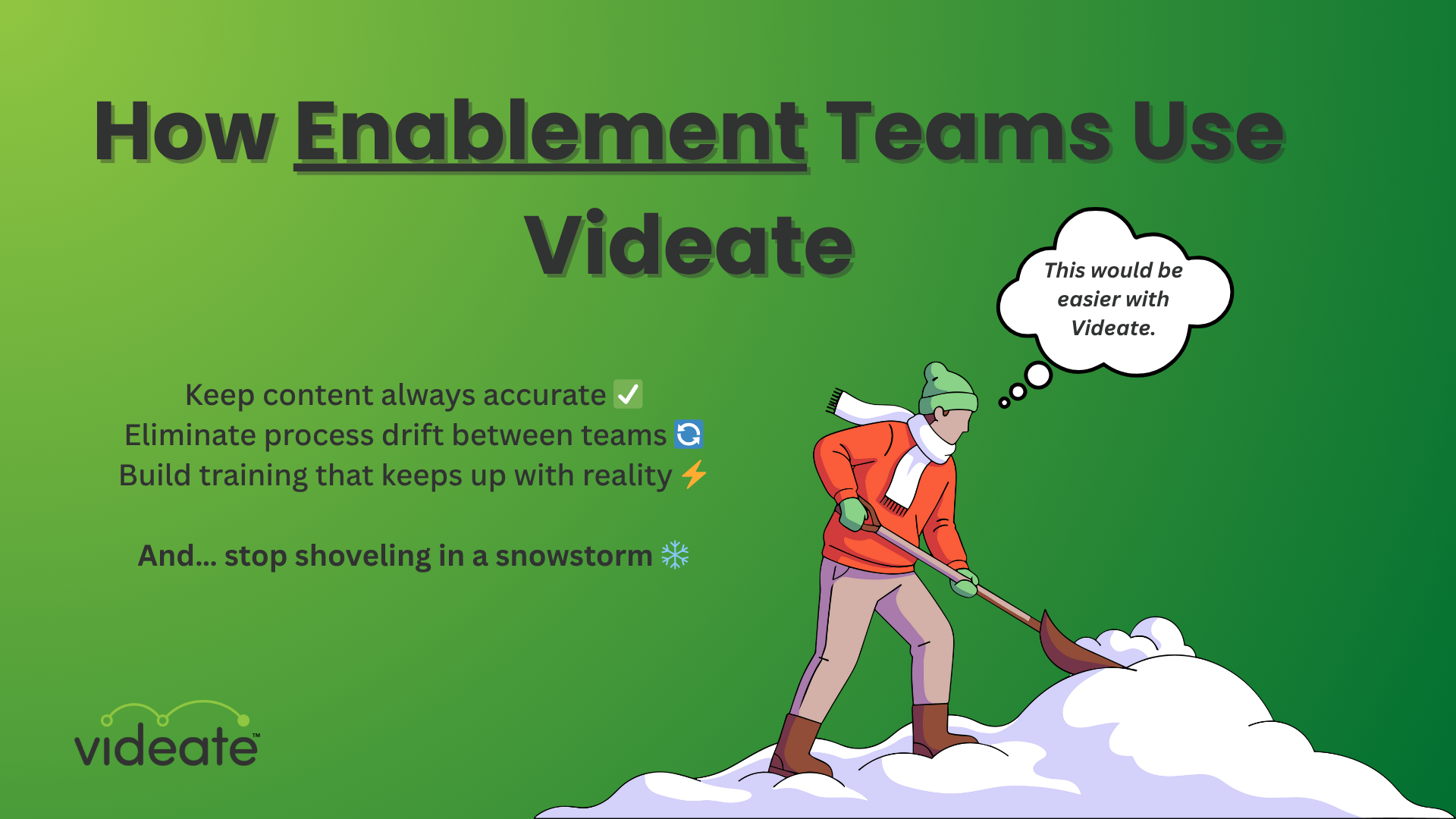
Earlier this month, Videate joined the Content Advantage talk show with Scott Abel and Megan Gilhooly, hosted by Zoomin. During the live session, we demonstrated a video tutorial of the Zoomin Analytics platform created using Videate’s automated tool that develops video directly from software documentation. Several people in the audience asked us to follow up and explain how we did it, so this week we will walk through the process.
Getting set up
Videate’s automated video production process always begins with:
-
Logging into the target software application
-
in this case Zoomin provisioned a test account and username/password
-
-
Uploading a document(s)
-
in this case it was a DITA XML file, but Videate supports other formats as well
-
Here is a snippet of the underlying XML document followed by what the content looks like in the current Zoomin documentation portal.

When you upload the DITA file into the platform, Videate launches the “Spieler,” a proprietary process that analyzes the document and the software and transforms the text and instructions into Spiel format.
Spiel format identifies
-
What to speak,
-
Where to go,
-
What data to use (in this case none was required),
-
What to do,
-
Special effects to apply (in this case none where added).
This is the resulting Spiel for the document snippet above in the Videate platform.
Real-time previewing and adjustments
Once the Spiel was created, we previewed the video (in real-time) and decided to make a few adjustments. The original document had some material we felt should be excluded to make the video better, such as how to log into the portal.
This was done by adding <skip> tags or instructions to the source document (they are done in such a way to ensure that it does not impact any other publishing processes). We then re-uploaded the modified document and previewed the video. After a couple of iterations, we rendered the final MP4s.
Next, we translated the document from English to Spanish. We used the Google translate feature built into the Videate platform and then had a native Spanish speaker review the translation. We adjusted two words and Videate recorded the Spanish version. The time from initial data (content and software access) to this one minute video was about two hours.
Here are the examples with different voices we showed in the webinar:
What makes a successful automated video?
Zoomin was an easy proof of concept because they have well-written structured content. While Videate can accept unstructured content, inconsistencies, poor grammar, and missing data add time to the process as they require more human intervention upfront. Adding special effects in specific places such as highlights or zooms also takes more time.
Whether you’re delivering product content in Zoomin or automating videos from your content using Videate, the time spent developing consistent and well-structured content will positively impact both the customer experience and the bottom line.
.png)
How Customer Success & Education Teams Use Videate


